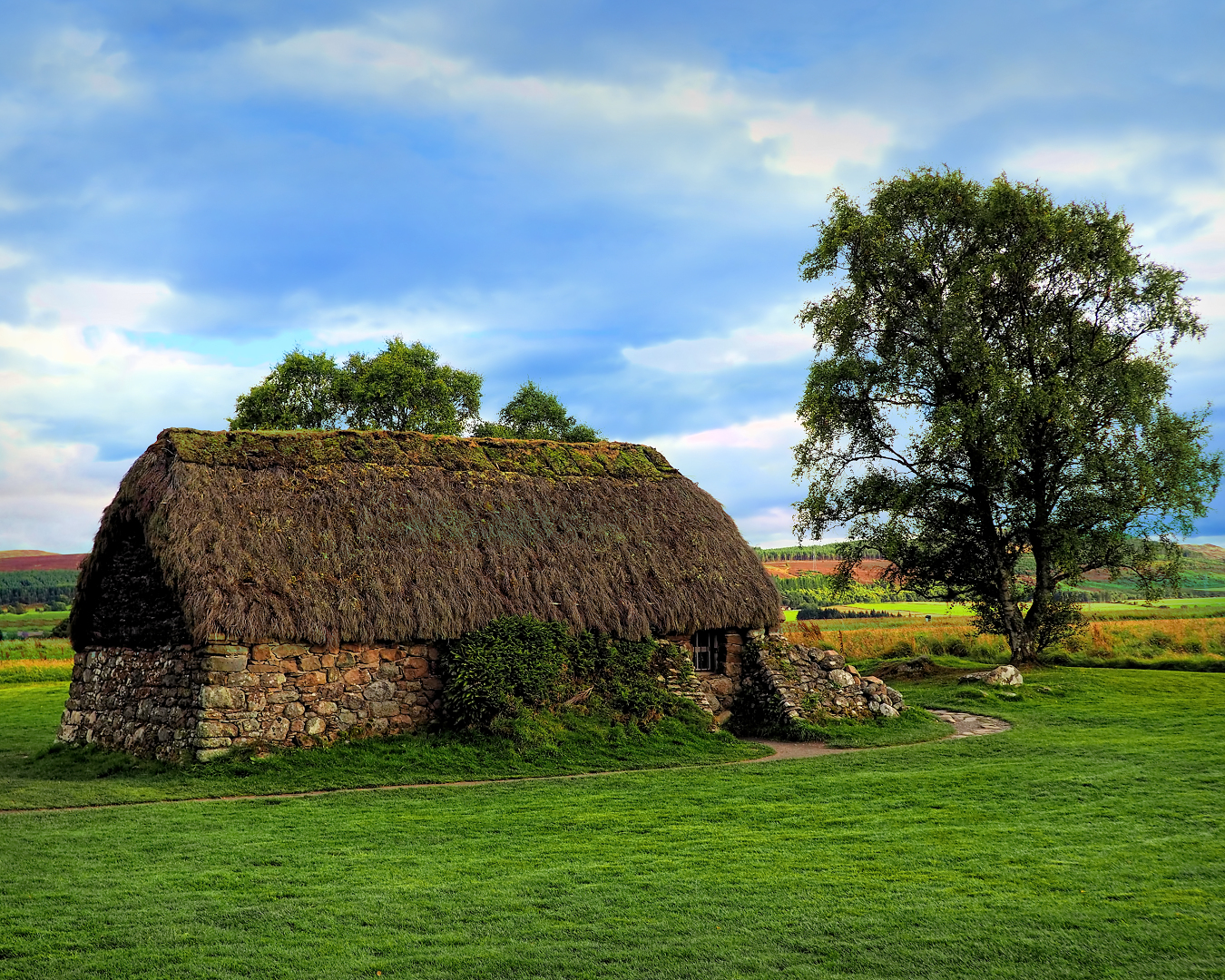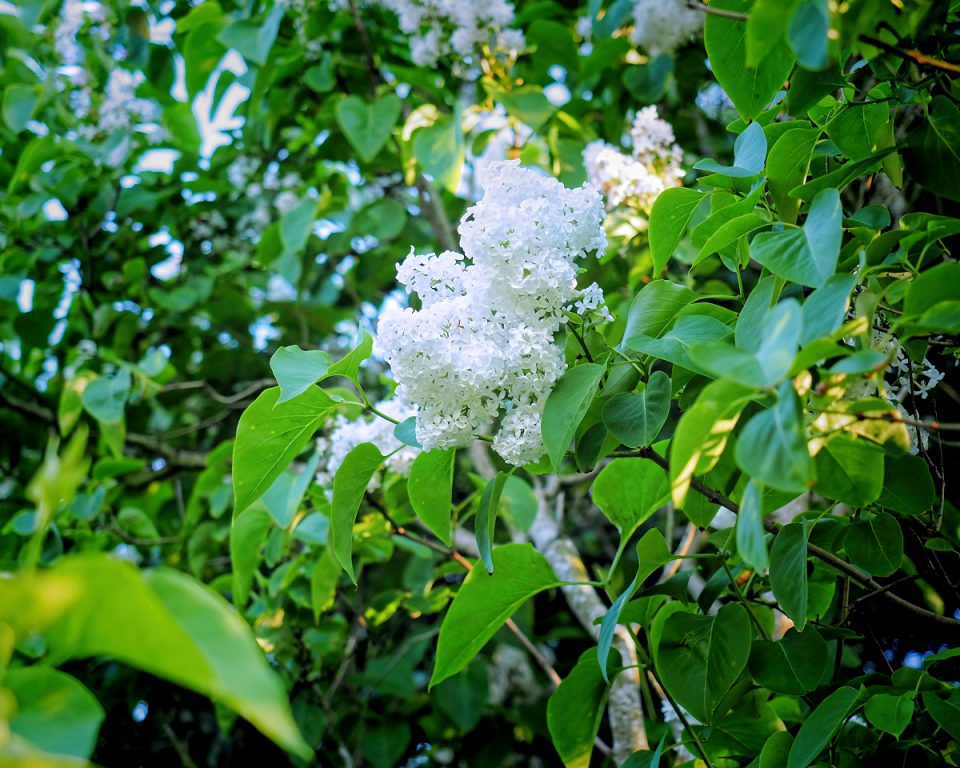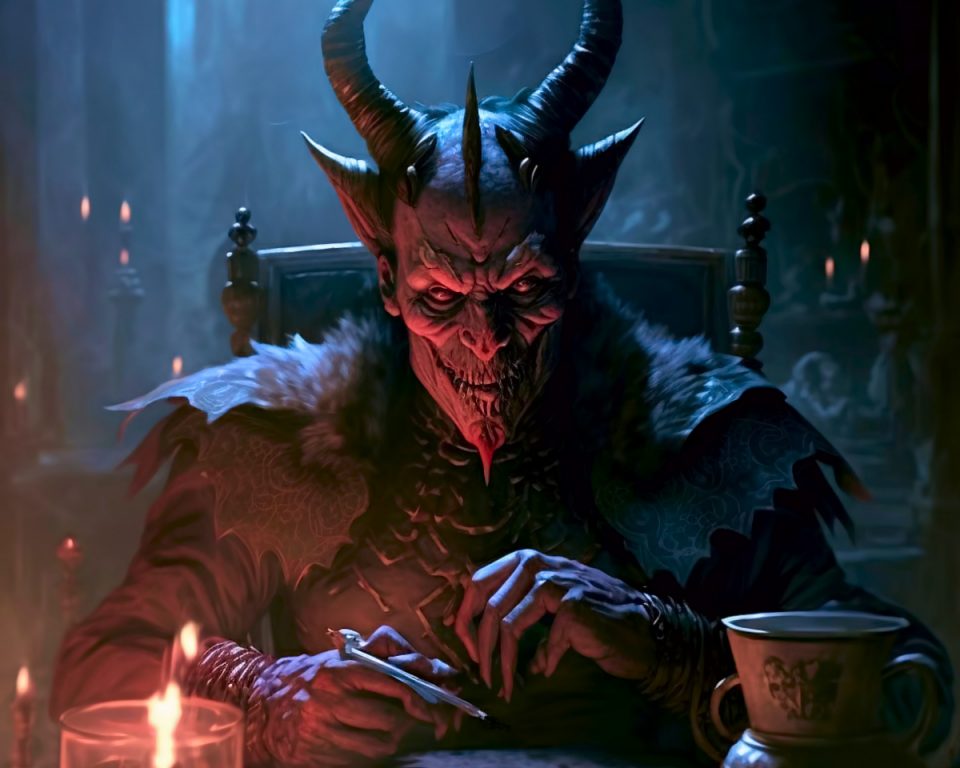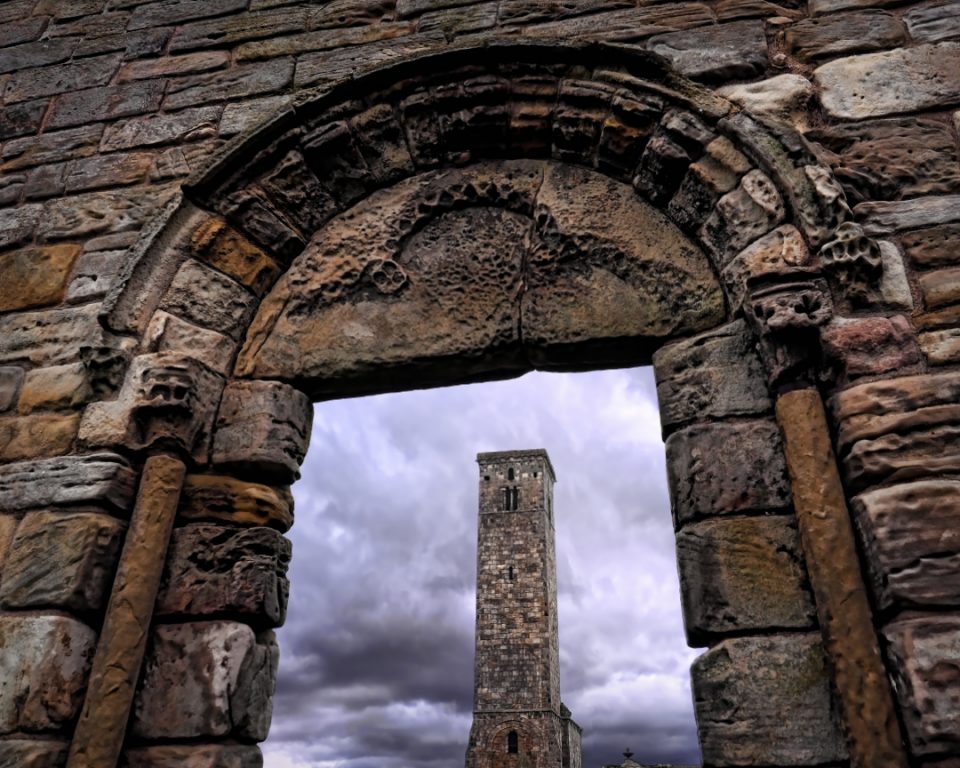Drummossie Moor, otherwise known as Culloden Moor, is a cold, desolate place. A relentless cold wind tugs at the flags which delineate the battle lines on the site of the last pitched battle to be fought on British soil. It is a cold wind which seeps deep into your bones. Or is it the wind or the icy chill of a place where the veil between the living and the dead grows very thin? There are those who say that on the anniversary of the battle, the restless spirits of the fallen arise from their graves to re-enact the battle.
Culloden is an evocative place. The Battle of Culloden was to be the death knell of the Jacobite Rising. It was also the death knell of the Highland way of life as the cruel reprisals in the aftermath of the battle would see the clan system brutally torn apart. And there were those, like the Brahan Seer who foresaw or had premonitions about the doom and devastation which would play out on Drummossie.
The Misrepresentation of the Jacobite Cause
Down through the ages Culloden has been portrayed as the final battle in an Anglo-Scottish conflict. The Jacobites are portrayed as a ragtag band of dirty savages, sacrificing themselves for their Italian-born princeling, Bonnie Prince Charlie, armed with no more than claymores, courage and a passion to cling stubbornly to an ancient but dying way of life. If the Jacobites were primitives and Gaelic- speaking Catholics at that, in a Protestant, English-speaking country, the government was justified in what they did in the aftermath of Culloden. It was the beginning of a national narrative of reconciling England and its “less developed” peripheries, a mission that would soon be applied on a global scale to justify expanding the British Empire. For instance, the Aboriginal peoples of Australia were once considered to be a separate species, not human and therefore could be treated like vermin to be disposed of without any qualms of conscience.
The Highlands were seen as the last part of Scotland, not fully incorporated into Great Britain, the British Empire and more importantly into the British Army. However, the Jacobites were far from the disorganised, uncivilised horde romanticised in both the media and history books. The Jacobite army was heavily armed with muskets and divided into conventional regiments. They were drilled according to French convention but also incorporated some British Army practices into their training. They also possessed a large amount of artillery and fired more balls than the British Government army did. Most of the Highlanders who fought for the Prince were good loyal protestants of the Episcopalian faith and the Jacobite commands were written in English and not Gaelic. Many of the Jacobites were not Highland at all, but came from the North East of Scotland, Ireland and from whoever in England was dissatisfied with ‘German Geordie’ as George II was known as by the Jacobites.
Yes, this was a civil war but by the time of the Battle of Culloden, the initial issue of religion had become less predominant. A more important issue had come to the fore: the Union of the Crowns.
The Jacobite Uprising and the Journey to Culloden
James VII of Scotland and the II of England was the last Catholic Monarch to the rule in the British Isles. His religion would ultimately lead to his downfall. When he produced a Catholic heir, the Protestants panicked and turned for help from William of Orange, the King’s Protestant son-in-law. He was deposed in 1688, during the Glorious Revolution and fled to France for his life. Meanwhile, James wrote an utterly tactless letter to the Scottish National Convention in Edinburgh. They declared for William. James did have one zealous supporter, Viscount Dundee. Bonnie Dundee, turned to a military solution. Some 3000 men rallied to his cause. Dundee’s forces destroyed William’s army with a devastating highland charge at the Battle of Killiecrankie in 1689. Alas, Dundee was killed during the fighting and the movement was left headless.
It seemed that Jacobitism had died a death but William of Orange’s reign over Scotland was characterised by government tactlessness and economic disasters. The most crucial was the Darian scheme, a Scottish venture to found a colony on Panama. William refused English assistance to the scheme and when it failed, leaving most of the colonists, dead, the King was blamed.
The Union of the Crowns and the Jacobite Cause
The Union of the Crowns in 1707, where the Scottish and English parliaments were merged into one, was a step too far for many Scots. The Jacobite numbers swelled overnight. The French, who were currently at war with Britain, saw an opportunity: they would land James III, ‘The Old Pretender’ in his ancient ancestral homeland and start a rebellion. The French invasion fleet arrived late in the Firth of Forth, to be met by the Royal Navy. The French Commander refused to put James ashore, putting an end to James’ aspirations for the immediate future.
Meanwhile, heavy excise duty and increased taxes did little to quell the disgruntled Scots. The fact that they were levied by the English-dominated Westminster parliament heightened the tensions. Scotland was a powder keg waiting to explode. When the explosion came, it sprang from an unexpected quarter. When George I of Hanover succeeded to the throne in 1715, he sacked one of the leading Scottish politician: John Erskine, Earl of Mar. Mar was not about to take this standing down. He decided to retaliate by raising the standard for the House of Stuart. On one side of his banner he put the arms of Scotland; on the other ‘No Union’. Thousands flocked to it. Soon he had most of the north of Scotland in his hands.
Many who rallied under Mar, were not Highlanders but people from the trading burghs of the North East of Scotland. The Duke of Argyll mustered for the British government and seized strategically important land around Stirling, but he was heavily outnumbered. At the Battle of Sheriffmuir, both sides claimed victory although the outcome was inconclusive. Then Mar lost his nerve and suddenly withdrew, forcing the Jacobite leaders to flee to France.
The exiled Stewarts were now pawns in foreign hands. Spain was the next European power to play the Jacobite card in 1719. However, a storm hit the invasion fleet before it even set sail for England and in the end only a small diversionary force made it to the Scottish Highlands. There they garrisoned at Eilean Donan Castle but were scattered by government troops at the Battle of Glen Sheil.
Lowland Scotland knuckled down under the Hanovarian regime, but it was an uneasy alliance. A major French invasion collapsed in 1744. Charles Edward Stewart decided to muster his own invasion force to land in Scotland. The Prince came without the men, money and guns he had been expressly told to bring with him. Instead, he came armed with unassailable self-belief.
The Arrival of Bonnie Prince Charles
Bonnie Prince Charlie first arrived on the Island of Eriskay in July 1745. The local clan chief told him to go home to France, but the Prince pressed forward. Charles needed the support of a few key clans for his cause to gain momentum. The Chief of Clan Cameron was persuaded to commit his people to the Prince’s standard with the guarantee that the prince would personally recompense the Chieftain should the uprising fail.
Initially, the cause met with a lot of success. Most of the government troops had been pulled out of Scotland to fight in overseas wars. The growing army reached Perth on 4th September 1745, where Charles proclaimed his father, James to be the rightful King. He took Edinburgh on the 17th September 1745 and won a decisive victory at Prestonpans against the government army on the 21st September 1745 where General Cope’s men were defeated in a matter of minutes.
Shifting Tides of Fortune
The Jacobites crossed the borders into England and after a five-day siege, captured Carlisle on the 15th November 1745. The Jacobites marched through Lancaster, Preston and Manchester, in the hope of reaching London and overthrowing George II. They reached Derby on December 4th. The Prince’s luck was running out. It was becoming apparent that support from France and the English Jacobites would not forthcoming. The Jacobites forces were in danger of being trapped on two sides. Many of the men had never wanted to leave Scotland in the first place. On the advice of Lord George Murray and several of the Highland clan chiefs, the Jacobite army began its retreat back into Scotland.
Once back on Scottish soil, Charles’ men were victorious against the government force at Falkirk and set up a siege at Stirling Castle. However, morale in the Jacobite camp was wavering and the Jacobites retreated into the Highlands in February 1746 as the Duke of Northumberland was advancing upon them with a superior force. The Jacobites took Inverness from the Earl of Loudoun. With funds running out and many of his men deserting, time was running out for the Prince. The Prince had barely one-third of the men that he had when his campaign was at its height. Meanwhile, Cumberland’s army crossed the River Spey on 12 April 1746.
On the night of April 15th-16th Charles hoped to gain an advantage over Cumberland’s forces by staging a surprise attack on their camp near Nairn. The plan turned into chaos and was aborted at the last minute. The Jacobite soldiers retreated to Culloden, while the Jacobite officers billeted at Culloden House. The exhausted Jacobites tried to grab a few hours’ sleep.
At this point, the battle still was not inevitable. The Jacobites could have pulled back to Inverness and regrouped, but on the morning of the 16th, arguments broke out amongst the Jacobite leadership and the Prince ignored all the counsel he was given and chose to stay and fight. His men were outnumbered 9 000 to 6 000.
The Battle of Culloden
The Battle of Culloden took place on the 16th of April 1746 on Drumossie Moor, overlooking Inverness. Charles Edward Stewart would meet a well-supplied government army, led by the Duke of Northumberland, son to King George II. Ignoring advice to launch a guerrilla campaign, Charles chose to stage a defensive action and confront his enemy on the marshy, rough ground of Drummossie. The ground was too marshy to accommodate the Highlander’s favourite tactic: the headlong charge into enemy ranks. Culloden did however, lend itself more to Cumberland’s strength in heavy artillery and cavalry. The artillery decimated the Jacobite lines as they waited for the command to charge. Charles waited for Cumberland’s men to make the first move but seeing how successful their bombardment was they kept on firing. When the command came to charge five minutes into the fighting, it was too late. Many had already fallen.
Even the wind worked in Cumberland’s favour. Smoke from the cannon fire blew towards the Jacobite troops, concealing the Redcoats from view. Cumberland’s men fired volley after volley towards the waiting Jacobites.
At last the call was given to charge. Cumberland switched to grapeshot and effectively wiped out the front line. Fifteen minutes into battle, the ranks were close enough to engage in hand to hand combat. Cumberland tried a new strategy. Normally after discharging a musket, the common practice was to use a bayonet. The Highlanders on the receiving end would take the bayonet on their targe or shield, then turning the shield aside bring down their sword on their exposed opponent. However, at Culloden, the Redcoats discharged their muskets at the Jacobite directly ahead of them, then bayoneted the Jacobite to the right, in effect, underneath the upraised sword arm and penetrating the Highlander’s chest.
The Atholl and Locheil regiments managed to break the Redcoat lines but in the space of three minutes, 700 of their men were slaughtered. The redcoats then turned their attention to the Jacobite regiments who were struggling to charge through the bog and began to surround them.
The Jacobites began to retreat and escorted the Prince away from the battlefield. In less than one hour 1,500 Jacobites were slain. Officially 50 government troops were killed although in reality some 200 to 400 Redcoats died.
A First-hand Account of the Battle of Culloden
As a boy, Donald Mackay of Acmonie, Glen Urquhart was a Jacobite volunteer soldier, who fought at the Battle of Culloden alongside his father and elder brother.
He escaped the field but later was forced to surrender. Mackay was deported to the West Indies. He escaped to Jamaica where he worked on plantations before finally returning to Scotland as an old man. He wrote an account of what happened on the battle that day.
“The morning was cold and stormy as we stood on the battlefield – snow and rain blowing against us. Before long we saw the red soldiers, in battle formation, in front of us and although the day was wild and wet we could see the red coats of the soldiers and the blue tartan of the Campbells in our presence.
“The battle began and the pellets came at us like hail-stones. The big guns were thundering and causing frightful break up among us, but we ran forward and – oh dear!, oh dear! – what cutting and slicing there was and many the brave deeds performed by the Gaels. I saw Iain Mor MacGilliosa (Big Iain Gillies) cutting down the English as if he was cutting corn and Iain Breac Shiosallach (Freckled Iain Chisholm) killing them as though they were flies.
“But the English were numerous and we were few and a large number of our friends fell. The dead lay on all sides and the cries of pain of the wounded rang in our ears. You could see a riderless horse running and jumping as if mad. When I saw that the battle was lost, I thought it best to leave and make for home. I said this to my brother who was near me and we made in the direction of Inverness as quickly as we could. When we reached Culcabock we stopped, feeling faint with hunger. I had some oatcakes in my bag and we got a drink of milk from an old lady who was beside the road. “How did the day go?”, she asked.
“Badly for the Prince,” we replied and left in haste. We went through the river near the islands above the town of Inverness and arrived home during the night. My father arrived safely in the morning and boundless was my mother’s joy at having us back home safe and well.”
The Aftermath of Culloden
Many of the Jacobites fled the scene and retreated to the Ruthven Barracks but the Prince sent them home, as he knew his cause was doomed. The retreating Jacobites pulled down the building, which was originally built to quell the 1715 Jacobite rising.
In the days following the battle, Lord Cumberland gave the orders that no wounded man on the battlefield be shown any mercy. The redcoats meticulously searched the battlefield, killing any survivors. Even the people who came from Inverness to watch the battle as entertainment were rounded up. Such was his brutality, that he gained the epithet, the ‘Butcher of Northumberland’.
Many of the high-ranking prisoners were executed for treason but the common soldiers were treated more leniently, mainly due to the sheer volume of men involved. 936 men were sent to the colonies, 222 men were exiled. Only 1 in 20 common soldiers were put on trial. Of these, 905 prisoners were set free after the Act of Indemnity was passed in June 1747. Another 382 were set free, in exchange for prisoners being held in France.
Bonnie Prince Charles after Culloden
Bonnie Prince Charles, spent the next five months on the run. A reward of £30,000 was offered for his capture. His loyal followers gave him shelter as he wandered through the heather down the banks of Loch Ness and on to the Outer Hebrides via Morar in the far west. Flora MacDonald, whose daring exploits were to be immortalised in the ‘Skye Boat Song’, risked her life by smuggling him from South Uist to Skye dressed as her maid, Betty Burke. After landing in Skye, Charles said goodbye to Flora and made his way to the nearby island of Raasay.
Charles then made his way back to the mainland, moving from Moidart to the even more remote Knoydart and living rough in the outdoors and in bothies. Tormented by that scourge of the Highlands, the midgie, short of food and with Redcoats on his trail, the Prince proved that he was very fit and hardy. As the summer wore on, the authorities realised they had been outwitted and the search for the Prince was gradually scaled down.
The French sent various rescue missions to find Charles and get him out of Scotland. Finally, on September 19, they were successful. Charles boarded the frigate L’Heureux at Arisaig.
Initially back in France, Charles Edward Stewart was hailed as a hero, with an exciting tale to tell. But politics are a fickle game and two years later the Prince was banished from France and returned to exile in Italy. In 1750 Bonnie Prince Charles secretly made his way back to London, where he is reported to have proclaimed himself a Protestant and entered into a relationship with a woman he had first met in Scotland called Clementina Walkenshaw. She bore him a daughter, Charlotte.
As a young man the Prince was very charismatic: handsome, athletic, musical and fluent in Italian, German and Spanish. By this time, however, the Prince had lost his charm and become a violent, brutish oaf who drowned his sorrows in alcohol. He beat Clementina so much that she was eventually forced to flee from him.
In 1772 he married the nineteen-year-old Princess Louise of Stolberg. Alas, it was an ill-fated match. By this time Charles was over 50 and had degenerated into a complete drunkard. He beat her, too, and eight years after marrying him, she ran off with a poet.
Charles then turned to his daughter Charlotte, whom he had legitimised, and invited her to share his home with him, making her the Duchess of Albany. She nursed him as his health failed during his later years. A broken man, he died in Rome in 1788, with the last rites performed by his brother Henry, the Cardinal Duke of York. He was buried in the Frascati Cathedral. On Henry’s death in 1807, Charles’s remains were moved to the crypt of St. Peter’s Basilica in the Vatican where they were laid to rest next to those of his brother and his father. His heart remained in Frascati Cathedral, where it is contained in a small urn beneath the floor under a monument.
In his will, he left most of his money to Charlotte – the Scots who had laid their lives on the line for him and the cause he represented didn’t receive a penny.
Culloden and the end of the Highland way of life
The initial response to the Jacobite defeat was a brutal series of reprisals across the Highlands of Scotland. Those who had managed to flee the bloodbath of Culloden were chased to all four corners of Scotland. Thousands of men, young and old, were interned and untold numbers were simply murdered.
The innocent and defenceless often bear the brunt of war, and Culloden was no exception. Government troops burnt farms, homesteads and villages. Women and children driven from their homes based on the suspicion that they were involved in seditious activities. In many cases, they simply were not.
Accounts of the time detail Redcoats entering villages and separating the children from their families. Upon being interrogated, if the children spoke Gaelic, the consequences were dire. To the British regime, this was a signal that highlanders were illegally maintaining their traditions.
The Scottish clan system had long been a thorn in the side of the British regime and to pacify this threat would allow the Government to focus on larger issues across the globe and prevent foreign meddling in Britain. The French and the Papacy had long supported the Jacobites, and with this threat neutralised the British aristocracy could sleep easier. In today’s terms what happened after Culloden would be deemed as ethnic cleansing.
During the 1745 rebellion, British army officers viewed all Highlanders with suspicion, despite the fact that many Highland clans had fought for King George. This distrust stemmed from a commonly held anti-Scottish and particularly anti-Highland sentiment in the eighteenth century. Highlanders were considered ‘barbarous savages’ and disloyal subjects. The British Government and Army believed that it was essential to civilise the Highlanders in order to establish peace in the region. This lead to the violent so-called ’pacification’ of the Highlands in the days and months which followed Culloden and the implementation of ’civilising’ measures throughout the Highlands.
The act of Proscription (1746) aimed to destroy the military power of the clans by banning traditional Highland Dress including tartan and the kilt, possession of arms and bagpipes, which were considered to be instruments of war. The Heritable Jurisdictions Act 1746 removed the almost sovereign power the chiefs had over their clans and dismantled the clan system.
A number of Highland landowners had their estates forfeited. The old runrig system of farming was dismantled and crofting was imposed on tenant farmers. Ultimately this was to lead to the Highland Clearances in the eighteenth century where tenants were evicted to make way for sheep.
With their traditional way of life under threat, many Highlanders needed to supplement their incomes. The British army targeted the Highlanders for recruitment as they were an accessible and expendable source of manpower. Large numbers of Highlanders were recruited to fight in the Seven Years’ War and later in the American Revolution. Soon the Highland regiments got a reputation for their fierce bravery, a quality which would result in the Scottish troops being sent to fight in the front lines as the British Empire spread throughout the world. Tragically, a sixth of the adult population in Scotland would die during the course of battle during World War I.
Haunted Culloden
Although Culloden was the last battle to be fought on British soil, some say that the fighting has never stopped. They say that the fallen fight between the burial mounds on the moor. On the anniversary of the Battle, the ghosts of the fallen soldiers are said to rise again, with the cries of the wounded and the clash of metal weapons striking ringing through the air.
Many reports have been made of a tall man with drawn features and dressed in Highland dress roaming the area. When approached he is heard mumbling the word ’defeated’.
In 1936 a woman reported lifting a tartan cloth which was laid across one of the grave mounds, only to reveal the apparition of a severely wounded Highlander beneath it.
Diana Gabaldon, the author of the Outlander novels, said in an interview by the BBC
“I’ve walked a lot of battlefields. Most are not haunted – that one is.
“Without being metaphysical at all, I can feel all the people there. I can’t talk about them or I’ll cry…”
With the aftermath of Culloden, it is perhaps small wonder that the fallen still fight on.




